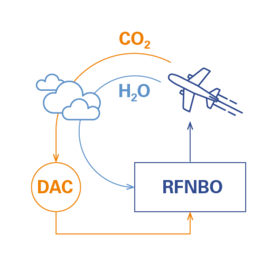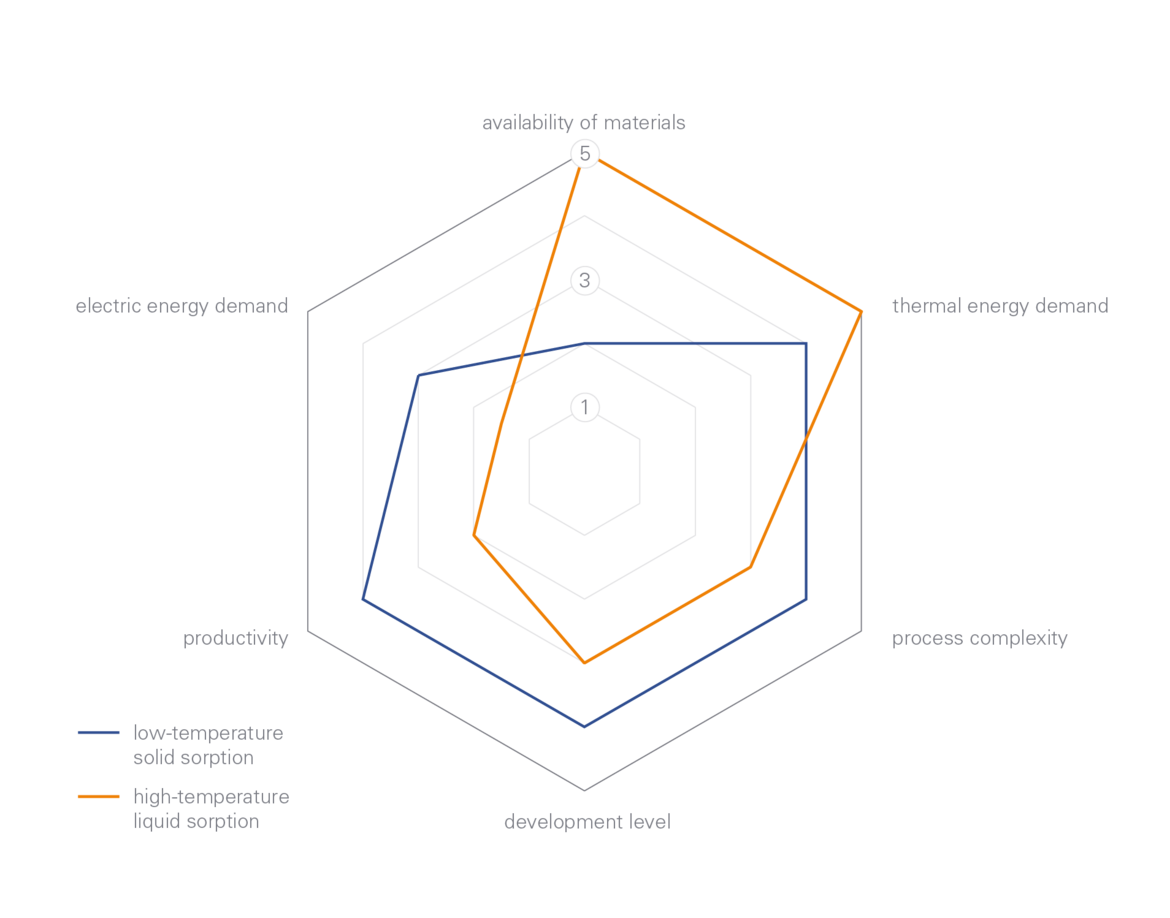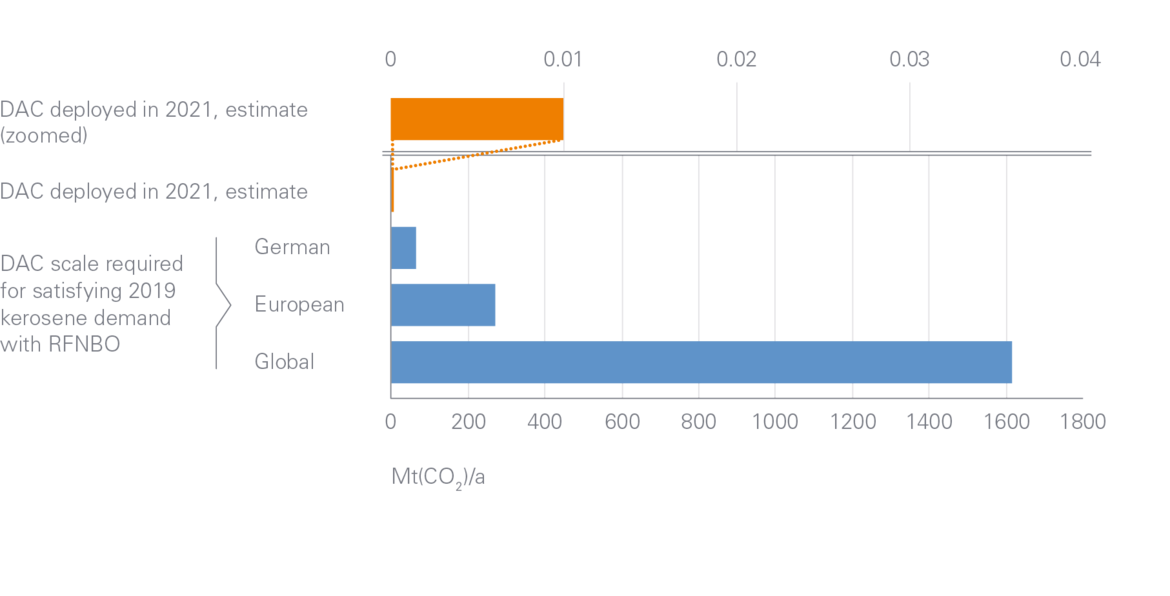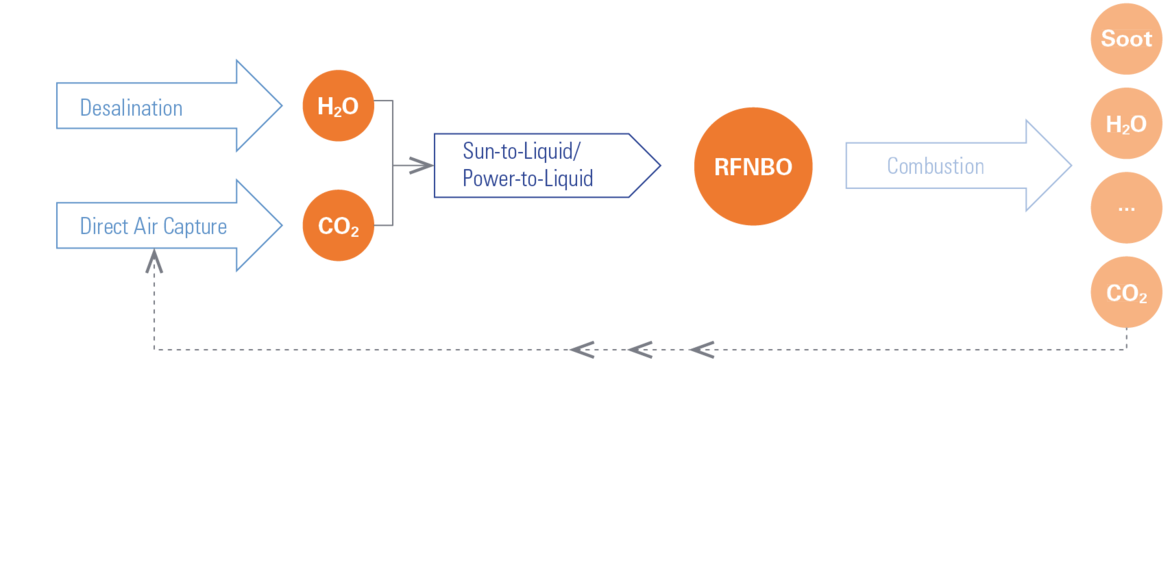Sustainable fuel options are a key part of aviation decarbonisation strategies. In this context, renewable fuels of non-biological origin (RFNBOs) are of specific interest, as they enable the decoupling of alternative fuel production from biomass availability; instead, CO2 is used as a carbon feedstock in Sunlight-to-Liquid or Power-to-Liquid processes.

Capturing CO2 from ambient air (direct air capture, DAC) offers the possibility to make use of this abundant and sustainable carbon source and, thereby, allows the carbon cycle to be closed. DAC is of limited technological maturity – worldwide, only a few plants with a total capacity of 10,000 t(CO2)/a have been realised – and, consequently, this technology is associated with considerable uncertainties. As a variety of DAC methods have been proposed, considering a wide range of approaches is key to evaluate the overall DAC development status and potential and to steer research and development efforts accordingly.
To obtain a thorough understanding of available technology options, their future costs and energy demands, as well as scalability and process integrability for different fuel pathways, researchers at Bauhaus Luftfahrt conduct scouting activities and subsequently analyse promising DAC solutions. These are versatile and stretch across a wide temperature range, employ solid or liquid sorbents, and differ substantially when it comes to their technological readiness. A comparative assessment reveals trade-offs, which are illustrated in the figure on the right, and facilitates conclusions on the potential of different technological options.



